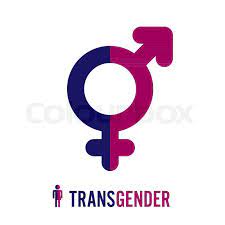Testosterone Replacement Therapy (TRT) has become a popular choice for men seeking to enhance their vitality, mood, and overall well-being. However, while the benefits of TRT are well-documented, there’s a lesser-known side effect that can arise: elevated estrogen levels, commonly referred to as high E2. Understanding how high E2 can affect men undergoing TRT is crucial for maintaining health and achieving the desired outcomes of therapy. In this article, we’ll explore the implications of high E2, its symptoms, and practical ways to manage it.
Understanding High E2: What It Means for Men on TRT
High E2, or elevated estradiol, occurs when estrogen levels in the body become excessive. This can be particularly relevant for men on TRT, as testosterone can be converted into estrogen through a process called aromatization. While estrogen plays a crucial role in male health, including bone density and libido, an imbalance can lead to a variety of health problems. Understanding the thresholds for what constitutes "high" estrogen for men is essential, as it varies based on individual physiology and overall hormone levels.Do Trans Men Have Vaginas
When men start TRT, they often focus solely on boosting their testosterone levels, overlooking the potential impact on estrogen. This oversight can lead to a range of complications that may compromise the benefits of TRT. It’s important for individuals on TRT to monitor their estrogen levels alongside testosterone to ensure a balanced hormonal environment. Getting regular blood tests is a good way to keep tabs on these levels and act before symptoms arise.
Common Symptoms of Elevated Estrogen in Males
Men experiencing high E2 levels may notice a variety of symptoms that can impact their quality of life. Some of the most common symptoms include weight gain, particularly in the abdominal area, mood swings, and reduced libido. Additionally, men may experience breast tenderness or gynecomastia, which is the development of breast tissue. These signs can be distressing and may lead to feelings of embarrassment or frustration.
Increased levels of estrogen can also have more subtle effects, impacting energy levels and overall motivation. Men may find themselves feeling fatigued or experiencing a decrease in their physical performance. These symptoms can create a cycle of frustration, where the individual might seek to remedy their low testosterone levels without realizing that high E2 is undermining their progress. Recognizing these symptoms early can be critical for managing them effectively.
How High E2 Affects Testosterone Replacement Therapy
High E2 can significantly dampen the effectiveness of testosterone replacement therapy. Elevated estrogen levels can counteract the benefits of increased testosterone, leading to a range of undesirable effects. For instance, while many seek TRT to boost energy and mood, high E2 can lead to feelings of lethargy and irritability, effectively undermining the potential of the therapy.
Moreover, high estrogen levels can spark a range of health concerns, including cardiovascular issues and increased risk of thromboembolic events. This means that men on TRT need to be vigilant about their estrogen levels to not only maintain the benefits of testosterone but also to safeguard their overall health. Addressing high E2 should be a key component of any TRT plan.
Recognizing the Signs: When to Be Concerned
It’s important for men on TRT to be aware of the signs that might indicate high E2 levels. Symptoms such as persistent mood swings, bloating, or changes in body composition, like increased fat around the midsection, should raise red flags. Additionally, if you notice tenderness or swelling in the breast area, it’s wise to consult a healthcare professional. These signs may point to a hormonal imbalance that needs addressing.
Ignoring high E2 symptoms can lead to longer-term health issues, including emotional distress and further complications related to sexual health. If you suspect you might be experiencing high estrogen symptoms, don’t brush them off as mere side effects of aging or lifestyle changes. Taking action sooner rather than later can help prevent more severe issues down the road.
The Link Between TRT and Estrogen Levels Explained
The relationship between TRT and estrogen levels is complex. When testosterone is introduced into the body via TRT, a portion of it can be converted into estrogen through aromatization. This is a natural process that occurs in both men and women, but the extent can vary significantly from person to person. Some men’s bodies may convert more testosterone into estrogen, leading to higher E2 levels.
Understanding this connection is vital for anyone considering or currently undergoing TRT. It highlights the importance of monitoring both testosterone and estrogen levels closely. If you’re on TRT and experiencing symptoms that may point to high E2, it’s essential to evaluate your hormone levels regularly to ensure that you’re in a healthy balance.
Managing High E2: Tips and Solutions for Men
Managing high E2 levels involves a multifaceted approach. One effective strategy is to work with a healthcare provider who understands the intricacies of TRT and hormonal balance. They can recommend either dosage adjustments, different forms of testosterone, or medications like aromatase inhibitors to help manage estrogen levels. Regular monitoring through blood tests will provide insight into how well these strategies are working.
In addition to medical interventions, lifestyle changes can also play a significant role in managing high E2. Adopting a diet that supports hormonal balance, engaging in regular physical activity, and managing stress levels can all contribute to more stable estrogen levels. It’s about finding a balance that suits your individual health needs and lifestyle.
Lifestyle Changes That Help Lower Estrogen Levels
Incorporating certain lifestyle changes can make a substantial difference in managing elevated estrogen levels. For instance, adjusting your diet to include foods that help regulate hormones can be beneficial. Foods rich in zinc, such as nuts and seeds, can support testosterone levels, while cruciferous vegetables like broccoli and cauliflower are known to aid in estrogen metabolism.
Regular exercise is another key factor in managing estrogen levels. Engaging in both cardiovascular and strength-training workouts can help reduce body fat and improve hormonal balance. Additionally, maintaining a healthy weight is crucial, as excess body fat can lead to increased aromatization of testosterone into estrogen. Simple changes in daily habits can lead to noticeable improvements in hormone levels and overall health.
When to Consult a Doctor About High E2 Symptoms
If you suspect that you might be experiencing symptoms of high E2, it’s important to consult a healthcare professional. A doctor can provide appropriate testing and help interpret the results to determine whether your estrogen levels are indeed elevated. They can also help differentiate between symptoms caused by high E2 and those stemming from other health issues.
Prompt action is essential for anyone on TRT experiencing concerning symptoms. A healthcare provider can work with you to develop a tailored plan to manage your levels effectively. Ignoring the symptoms or delaying consultation can lead to further complications, so don’t hesitate to seek help when needed.
Understanding the implications of high E2 levels is crucial for men undergoing TRT. Recognizing symptoms early, monitoring hormone levels, and making necessary lifestyle changes can help mitigate the impact of elevated estrogen. Remember, you’re not alone on this journey; it’s essential to seek support from healthcare professionals who can guide you through the complexities of hormone management. Take charge of your health and ensure your TRT experience is as beneficial as possible, paving the way for a happier and healthier life.


